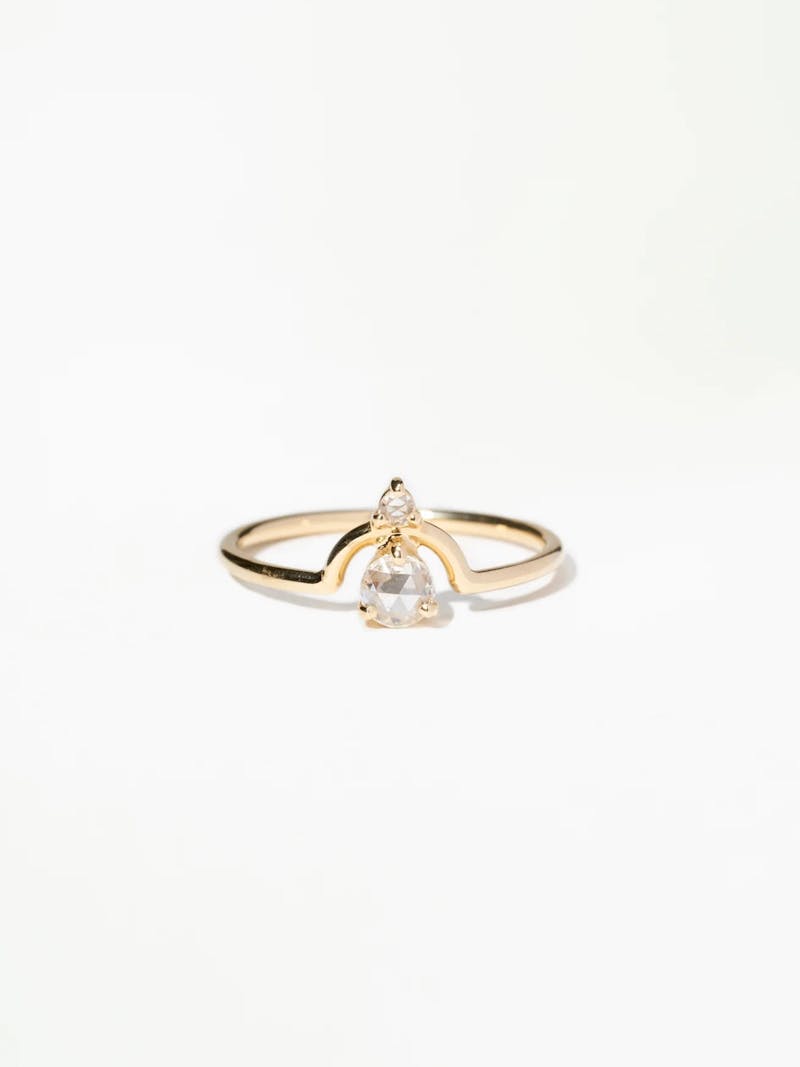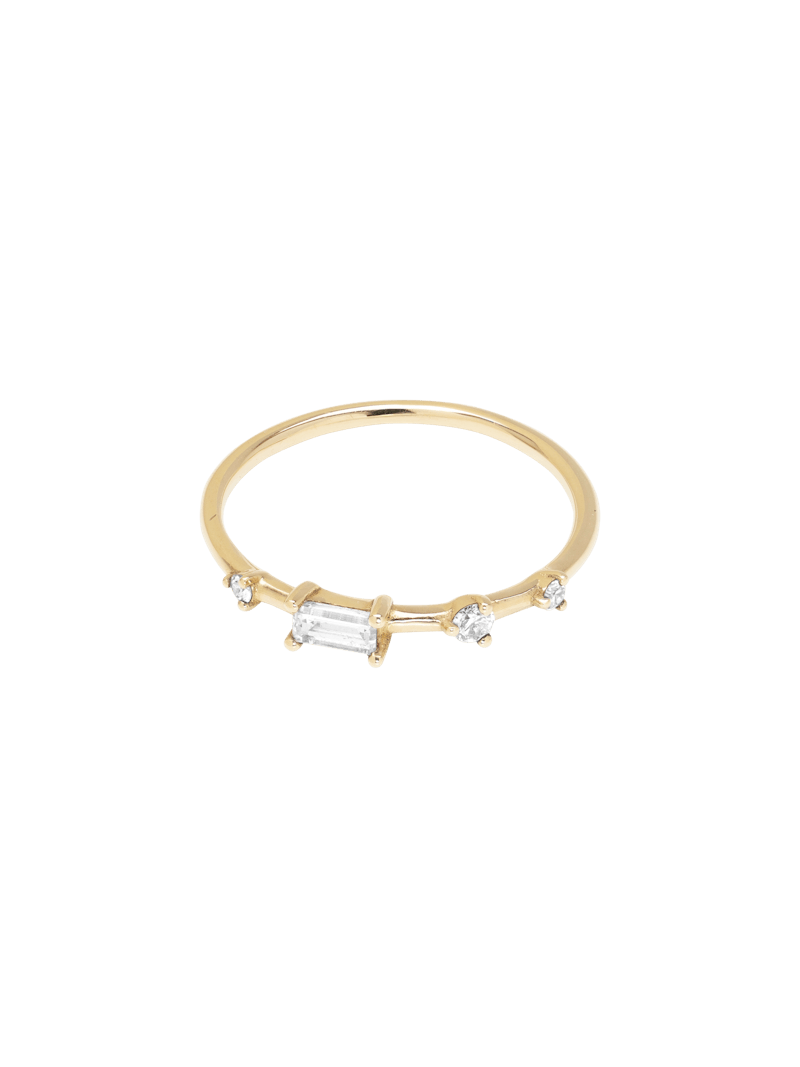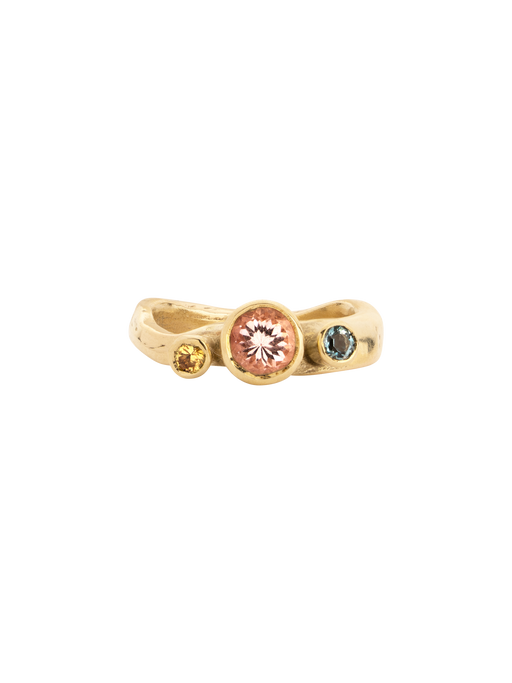Buying an engagement ring
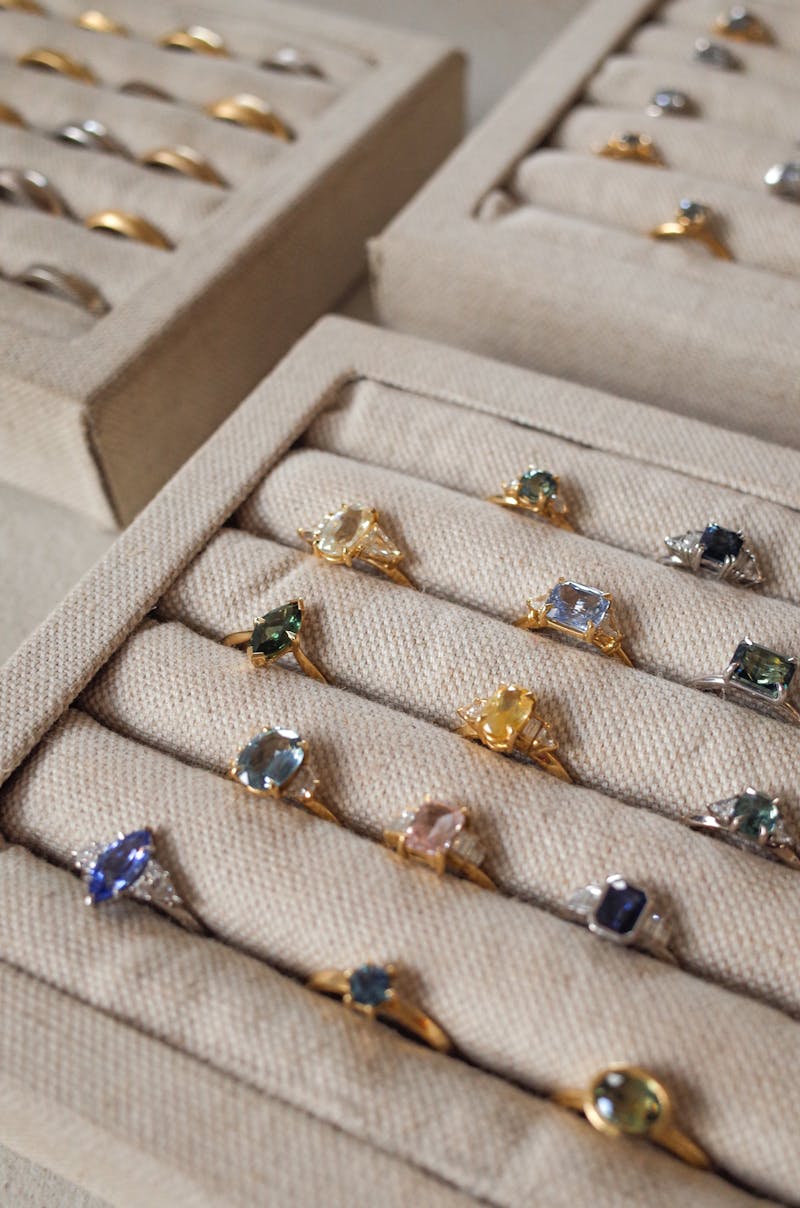
Buying an engagement ring is exciting but buying the right engagement ring can be slightly scary. From sleuthing and rummaging through your partner’s jewellery drawer, to myths around how much you should spend, there is a lot to do and think about.
What should you consider when buying an engagement ring? To set you on the right path, we’ve compiled the ultimate guide about what to consider before buying an engagement ring. While we don’t attempt to answer every single question you might have about engagement rings in a single article, this is a comprehensive list of all the elements you want to think about before diving in, and will hopefully be a good starting point for your search.
Consider: WHO YOU BUY FOR
Congratulations! You have found someone you want to spend the rest of your life with. Now, it may sound obvious, but you’ll definitely want to consider the personal style of your chosen person when starting to think about an engagement ring for them.
While it could be tempting to buy the most classic of engagement rings as a “safe option,” ask yourself if this is really what your partner would like and connect with on a deeper emotional level.
Jewellery is always personal, and engagement rings even more so: this is a piece of jewellery your other half will be wearing every day. A diamond solitaire ring may be perfect, but something less classic may be better suited, depending on the style of your partner. Don’t be limited by what big jewellery companies and advertising are telling you: you don’t necessarily need to buy a diamond center stone piece - any ring that your partner will love and want to wear every day for the rest of their life, and which represents your union and love, is the perfect engagement ring, for them.
Consider their personal style – are they colourful and adventurous in their fashion choices? They may connect with an engagement ring set with colourful gemstones, or in a non-traditional setting. Are they more classic in their style, but still forward-leaning design-wise? Diamonds might be the right choice, but perhaps in an asymmetric setting or more organic texture.
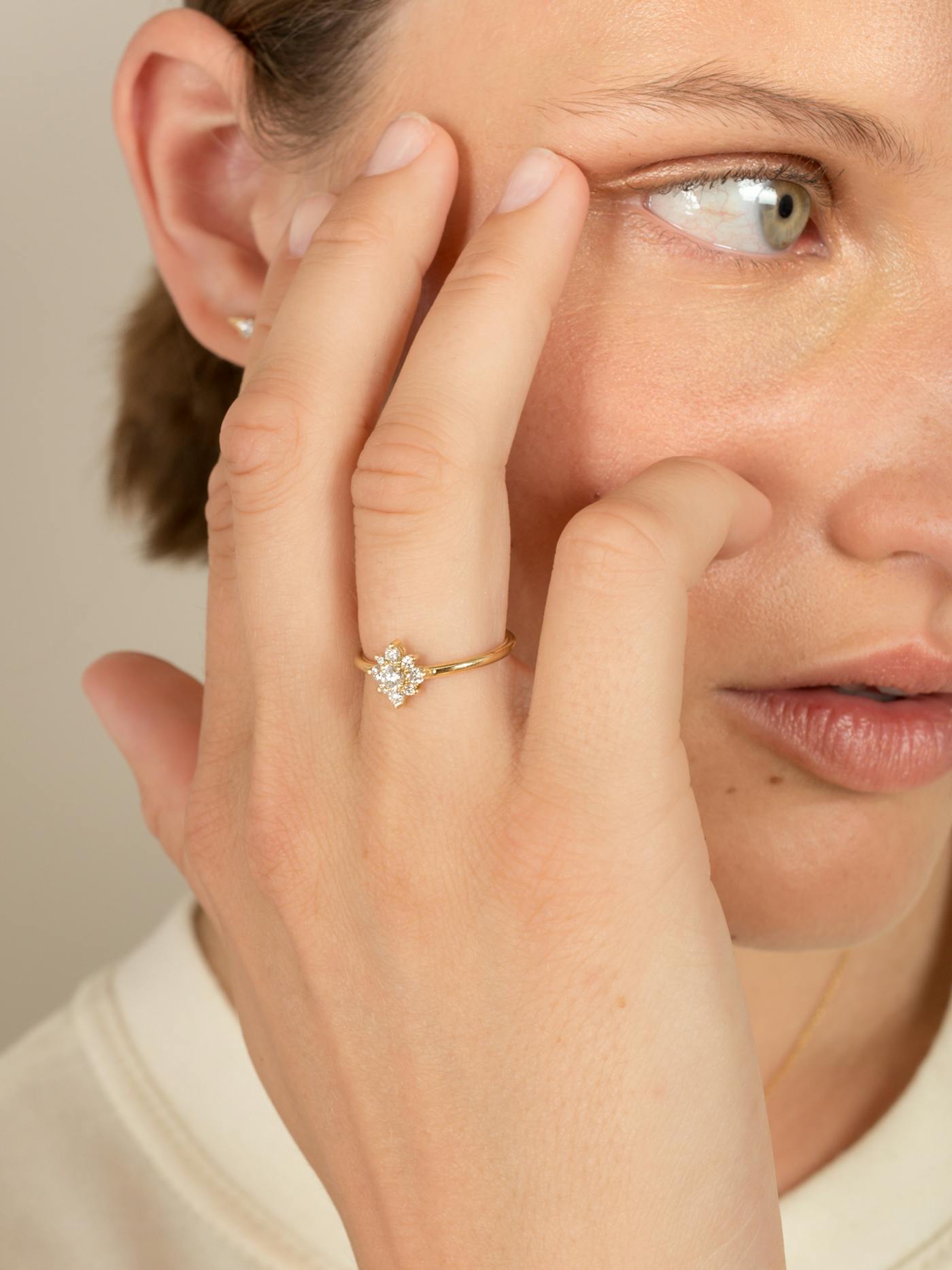
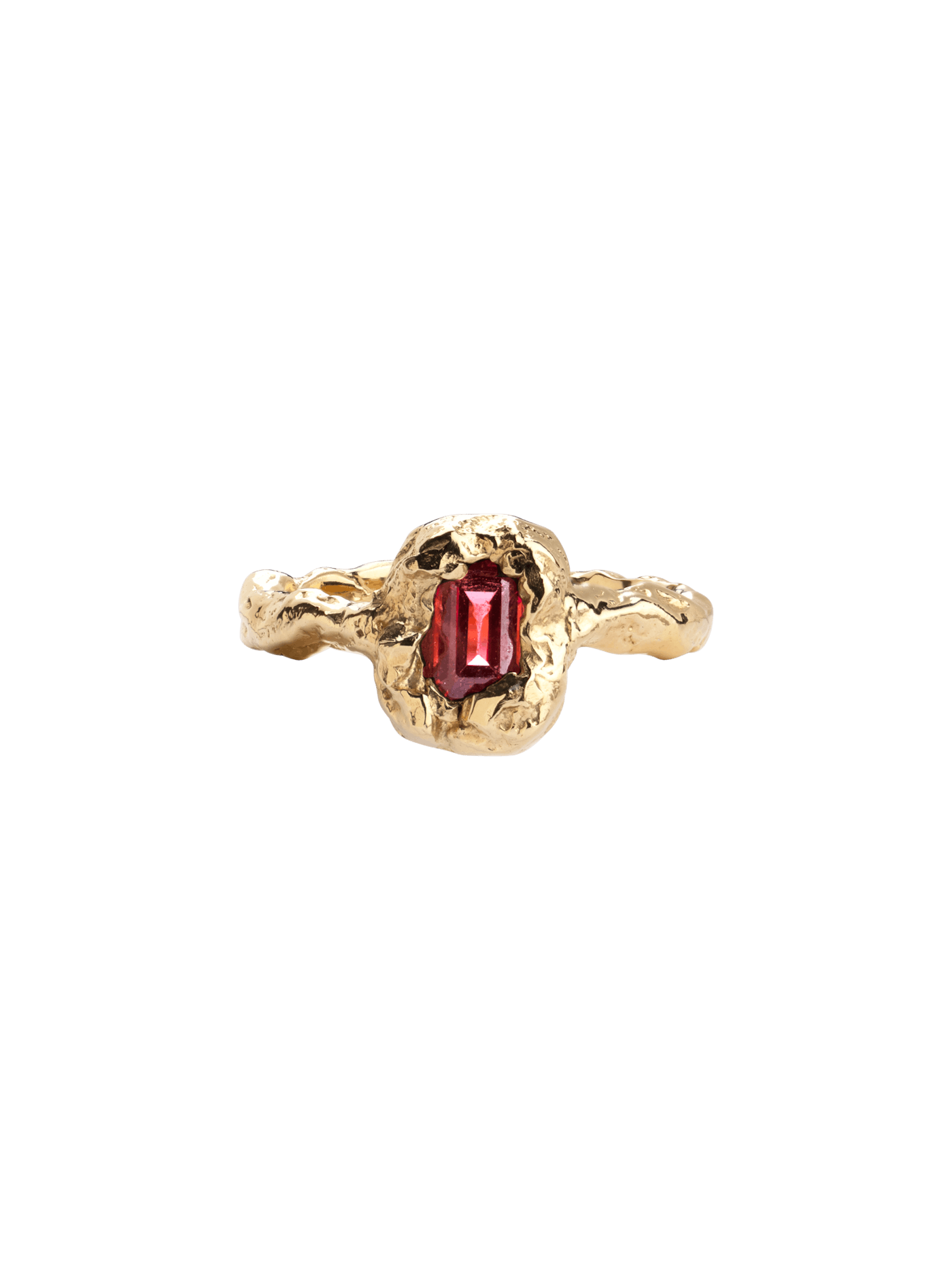
Doing some research on jewellers should be your first step on the road to buying an engagement ring.
Try to understand a jewellery designer’s visual universe, what their style is and whether they match with the style of your partner.
Some jewellers will specialise in specific techniques or materials, some will have a lot of organic shapes while others may be inspired by architecture and feature a lot of geometric angles.
Honing in on one to three particular jewellers whose visual universe you connect with is usually a good starting point for your search.
Remember: everything goes when it comes to engagement rings. It’s all about personal style and preferences, yours and your partner’s.
Consider: SURPRISE OR CO-CREATION
There are many ways to propose, but when it comes to an engagement ring, your options are more limited: you either want the ring to be a surprise, or you want your partner’s input.
Both options are perfectly fine and are a matter of you and your partner’s personal preferences. It’s worth noting if you’re really unsure about what your significant other’s tastes in jewellery are, the co-creation route may be safer, and is also a fun creative process to go through together.
You can propose with a “placeholder ring” and book a virtual consultation for both of you to chat with a jeweller about your preferences. Jewellers are always happy to accommodate couples who want to both be involved with the design of their engagement ring. This is one of the most important jewellery purchases of your life, so they want to make sure it’s a success.
If you want the ring to be a surprise, read on. If you are going the co-creation route, forward this guide to your partner so you can both be on the same page when it comes to your ideal engagement ring.
Consider: TIMELINE
Every one of our jewellers is in agreement when it comes to timings: please allow longer than you think you’ll need.
There are many things to consider when buying an engagement ring, but even once you’ve decided on a jewellery designer and a design, you won’t get an engagement ring straightaway, as these special pieces are typically made to order, and are not “off-the-shelf” (and neither would you want them to be). If you buy an existing design, you could be lucky that the jeweller already has one made up, or has the stone at hand, and get a ring in as little as one or two weeks.
But it could take a couple of months to make your perfect engagement ring if you’re customising or going bespoke.
For custom or bespoke engagement rings, most jewellers have a six to eight weeks timeline, but it could be longer if you want a stone that’s hard to source, if you’re slightly indecisive, or just busy with work and not very quick to reply to your jeweller’s emails.
Ideally, allow for two months, but the longer you have, the better.
Consider: PREFERRED CREATIVE PROCESS
Going hand in hand with your timeline needs is, of course, a decision on what creative process you would like. You have three options:
1. Buying an existing design
2. Semi-customising design
3. Commissioning a fully bespoke ring
If you see a ring design you think would be the perfect engagement ring for your partner, by all means, go ahead and order it.
Fully bespoke, on the other hand, require more time and more decisions: from selecting a jeweller to discussing your needs, agreeing on a design to selecting a stone and metal.
Semi-custom is a nice in-between. You may like an existing design but want a different stone, a different metal, or you like the stone setting but want to change the band slightly… the customisation options are endless, so reach out to your jeweller of choice about your options.
We had a chat about the bespoke process with Rachel Boston. Read about it here.
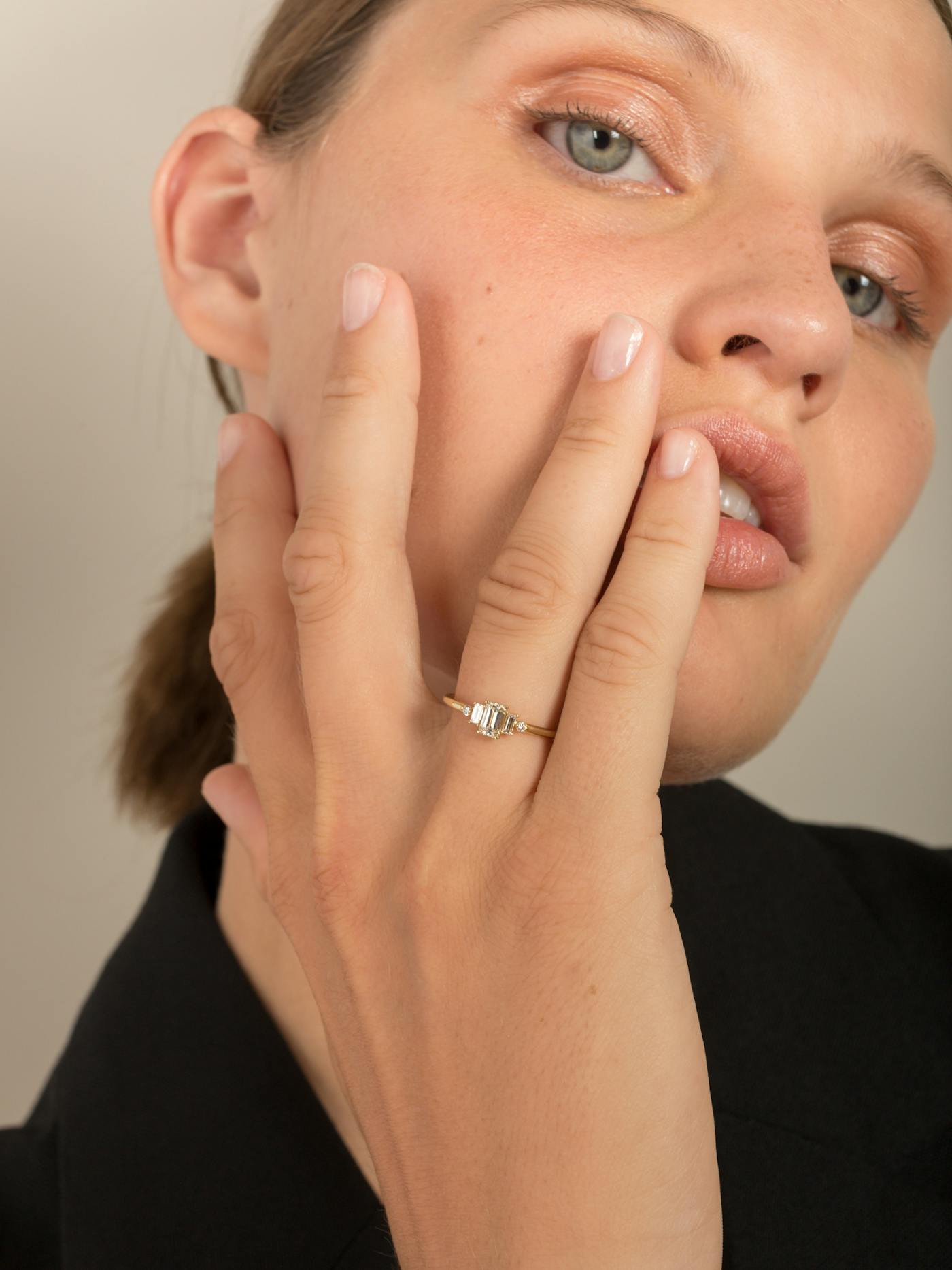
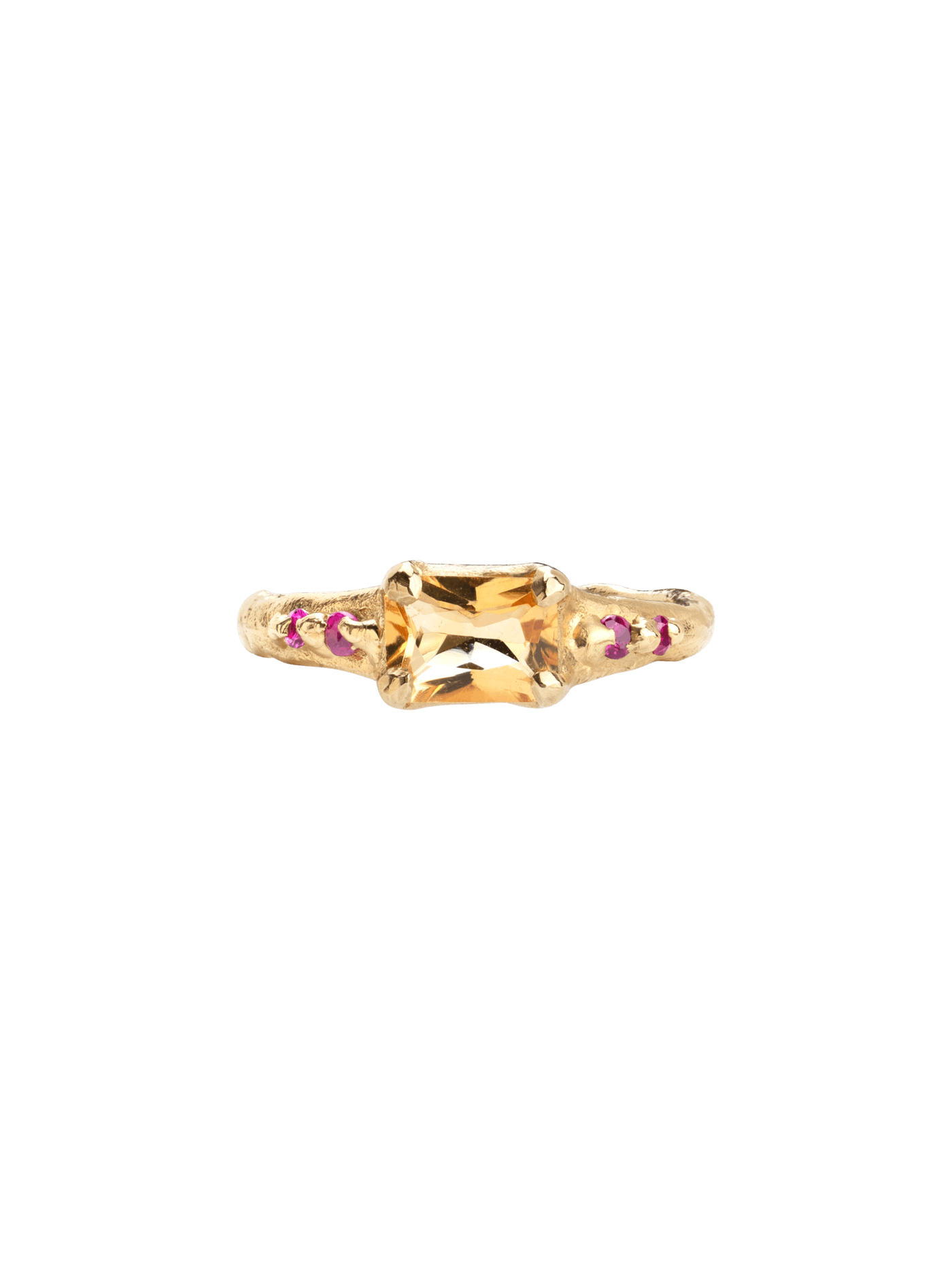
Choosing the right jeweller for you starts with style, but it doesn’t end there. An engagement ring is a very personal piece of jewellery, and we are firm believers that the entire experience and memories you have of the process are made many times better if you have a connection with the person who’s made it for you, and respect for their skill and creativity.
Things to look for and keep in mind include whether you get along with them – especially if going the bespoke route – and whether they align with your values.
Ask yourself, do you like the way they have set up their business? Do they have proper attention to detail? Do they take great care in sourcing and selecting their gemstones? What are their credentials? Do you want to support this particular jeweller? Does it make you feel good to buy from them?
An engagement ring represents you and your partner’s love: you should feel excited about the jeweller who makes it and will become part of your story.
Consider: METALS
Yellow gold, rose gold, white gold, platinum… the choice of metal is one of the most crucial decisions to be made when buying an engagement ring.
Each metal has its own look and properties, which also has implications when it comes to maintenance.
Yellow gold is relatively soft, so it will show wear - small dents and scuffs in the metal that show the signs of everyday wear. Some people like this look, as it can be a visual reminder of the passing years.
Rose gold is an alloy of gold and copper, which may cause allergies. This is very rare, but still something to keep in mind and test, if you’re in doubt.
White gold is also an alloy, which means it’s yellow gold mixed with other metals. White gold is always rhodium-plated, which requires upkeep as the gold underneath may start to show with constant wear, making the ring look slightly dull. How often you need to get a white gold ring re-dipped varies on the thickness of the original plating and how it’s cared for, but it may need to be replated every couple of years.
Platinum is a harder metal, so doesn’t show marks as easily, but will develop a patina – a soft finish – over time, and while some people like the look, others will want to get it repolished every couple of years as well.
Consider: GEMSTONES
Whether you want diamonds or other gemstones, it’s important to understand that not all stones are created equal when it comes to everyday wear.
Since an engagement ring will be worn every day, the stone has to be able to withstand a lot more than a piece of jewellery that’s only worn occasionally.
A stone’s ‘hardness’ will tell you whether it is a good fit for an engagement ring. In general, a hardness of 7 or above is the way to go – this includes for instance emeralds, sapphires, rubies, morganites and some quartz types. Safe to say, there is a wide variety of choice beyond diamonds.
If you’re going for diamonds, learn about the 4Cs – Carat, Clarity, Colour and Cut - and which C you should prioritise and invest in. You can read more about the 4Cs in our guide.
Your choice of jeweller will take a lot of the guesswork away from choosing gemstones. Sourcing and selecting gemstones are key skills for jewellers, and some specialise in very particular types of gemstones. Some jewellers even devote their careers to sourcing one particular type of gemstone, and most hone their gemstone expertise over the course of many years. Your jewellery designer will have a clear perspective on what works for an engagement ring.
Consider: GEMSTONE SETTING
Once you have decided which gemstone or gemstones you’d like, it’s important to consider its setting. Again, because an engagement ring will be worn every day, the stone needs to be secure enough to withstand some bashing. The setting plays a crucial role in protecting the gemstone and shouldn’t be an afterthought.
The stone’s setting also needs to complement the gemstone to maximise shine.
One of the most popular choices of stone setting is the “claw”. Leaving the stone exposed, this maximises the stone’s sparkle, but it may not be the best choice for delicate stones like emeralds.
A flush setting is highly secure and minimises damage to the stone, as a hole is drilled into the metal and the stone hammered in. There are many other settings you can choose from, from pavé to tension.
Consider: SUSTAINABILITY
You will want to consider the sustainability of both the metal and gemstones used in the engagement ring.
Metals are easily recyclable and recycled gold, as well as recycled platinum, are extremely common these days. Choosing recycled metals is a good way to ensure the footprint of your ring is minimal.
If you care more about the social implications, you can also choose fairmined or fairtrade gold, which supports independent miners and the surrounding communities.
When it comes to gemstones, you will want to as a minimum make sure the diamonds you buy have a Kimberley Process certification, which prevents “conflict diamonds”. However, the transparency in gemstone sourcing is notoriously low, so the best you can do here is to have a chat with your jeweller about the origin of their stones, and their stone supplier’s vetting process, or purchase from an independent source that gives you transparency around this information.
Like recycled metal, you can also choose antique or recycled diamonds or gemstones. These stones will have been worn previously, then repurposed and recut.

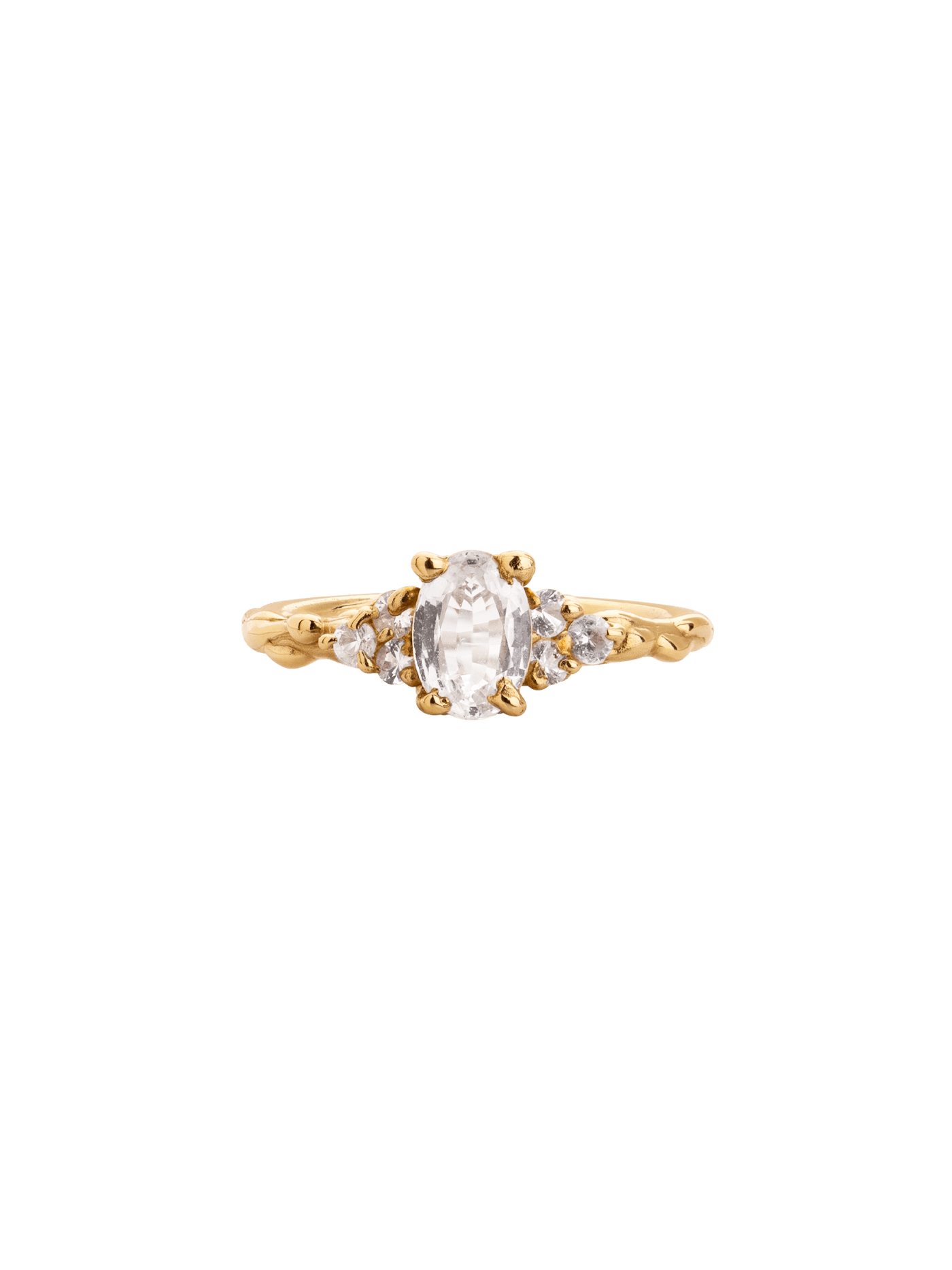
The engagement ring you are buying will be worn every day, so comfort shouldn’t be an afterthought when selecting a design.
Things to consider include whether the stones are sticking out or up and the presence of prongs, which may catch more easily in clothing or feel less safe. And of course, you’ll want to consider the fit, which includes thinking about the diameter of the band (anything thicker than 3mm is typically not comfortable for everyday wear), as well as any protrusions on the band that might make it uncomfortable to wear at length.
Consider: RESIZEABILITY
Most people’s fingers will change size throughout their lifetime. Your fingers will change size with age, if you lose or gain weight, or if you become pregnant. How easily a design can be resized may be something you want to consider when buying an engagement ring.
Most rings can be resized quite easily, as the metal band can be cut and resoldered by an experienced bench jeweller, without any visible signs of change. But not all designs allow for the same ease of resizing. A full eternity band (with diamonds set all around it), for example, can be resized but will be much more challenging, time-consuming and will cost more than resizing a plain band, or even a half eternity ring. And downsizing a full eternity ring is easier than upsizing it, as matching stones will need to be sourced to maintain the overall design.
Consider: CERTIFICATION
Getting a certificate of authenticity makes it easier to refresh, to repair and to potentially remodel. Certified engagement rings retain their value better and are easier to insure too.
We offer a digital certificate for every piece of jewellery on Finematter.
Consider: PRICE POINT
Then there’s of course the question of price, and how much you should set aside for your engagement ring purchase. Your budget will inform the design and the stones of the engagement ring you buy.
While there are many a guideline around how much you should spend on an engagement ring, we’re here to tell you it’s all a marketing ploy!
It doesn’t matter if you spend £500 or £5,000 on an engagement ring, what matters is that the ring fits your budget, your partner’s style and is a piece of jewellery that will be treasured forevermore.
Should you spend one month, two months, three months of your salary or re-mortgage your parents’ house? There really are no rules. But it may help to understand how the price of an engagement ring is set. When it comes to pricing, jewellers typically set their prices based on;
1. The value of the metals
2. The value of the gemstones
3. The work it takes to design and make the piece
4. Any complex speciality work that requires outsourcing to a specialist artisan, e.g. complex stone setting
This means that your design choices will affect the price. The size and quality of the gemstones is typically the biggest price driver. But of course, it will also typically be more expensive to design a bespoke piece, as the jeweller can’t distribute the cost of designing and making the piece across multiple pieces.

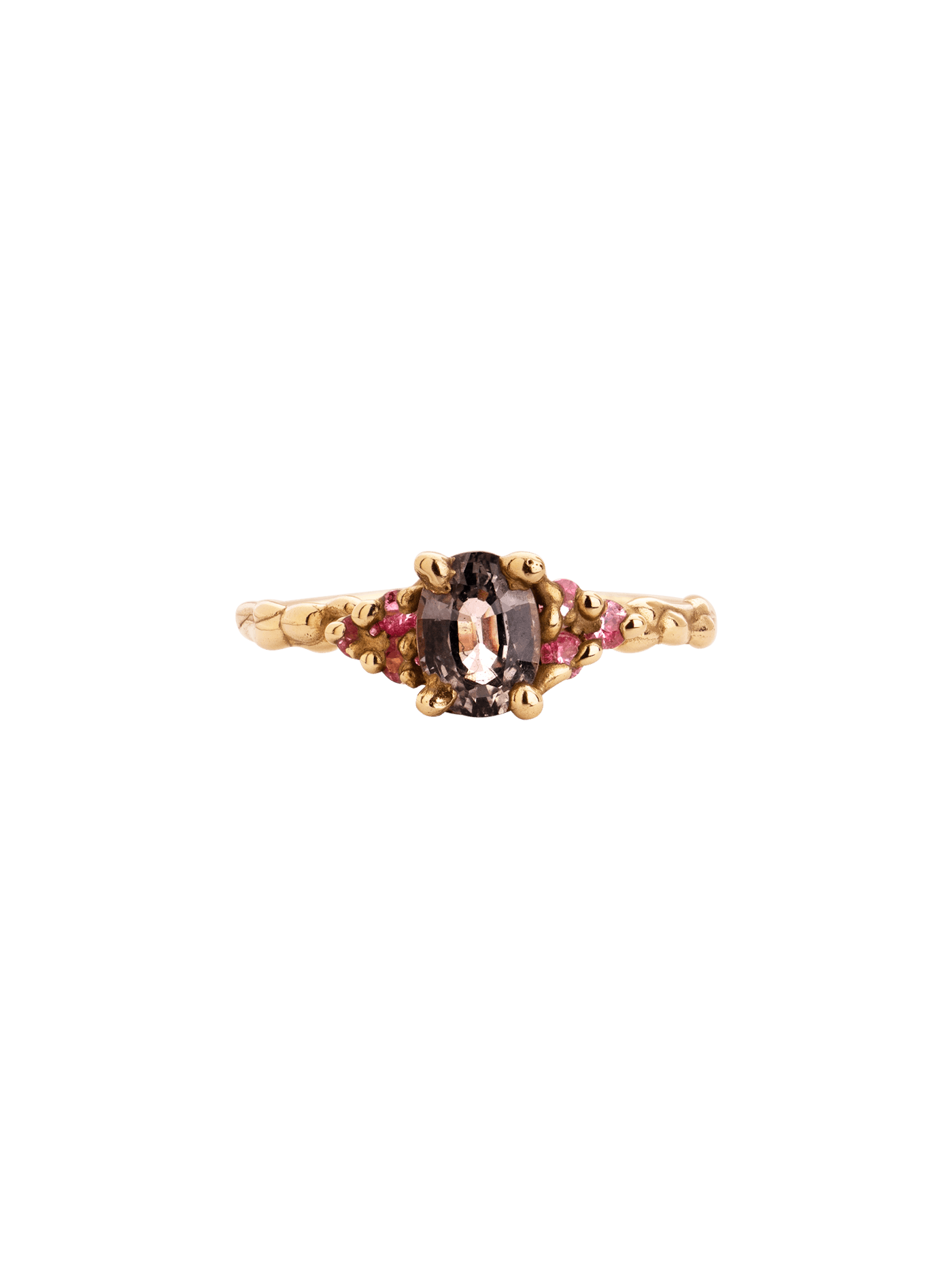
Think ahead when choosing an engagement ring. Will you want the wedding band to sit next to the engagement ring, or on a different finger? If you do want it sitting next to the engagement ring, will there be enough space for the style of wedding band you have in mind? Will you mind if the wedding band and engagement ring have a gap in between or do you want them to sit tightly next to each other? If you do not want a gap, high-set rings usually allow for more space for a wedding band, while low-set rings may take up more space.
Some jewellers offer wedding rings that match the style of their engagement rings, but not all do.
It is worth thinking about, especially if you buy an engagement ring with a very unusual design profile.
Consider: CUSTOMS & DUTIES
If your jeweller of choice is overseas, think about customs and duties and don’t forget to add the cost to your final expected price.
If you buy from an international jeweller through Finematter, we have systems in place to ensure your ring gets exported at the ex. VAT price, and imported with your local VAT rate. So you pay the same amount of VAT as if you bought from any local jeweller, and your engagement ring won’t be more expensive overall.
Consider: INSURANCE DURING SHIPPING
Lost, theft, damage… while you may not want to be thinking about what could happen to the engagement ring while it’s making its way over to you, you should insure yourself against the possibility.
If you buy through Finematter, all shipments are of course fully insured.
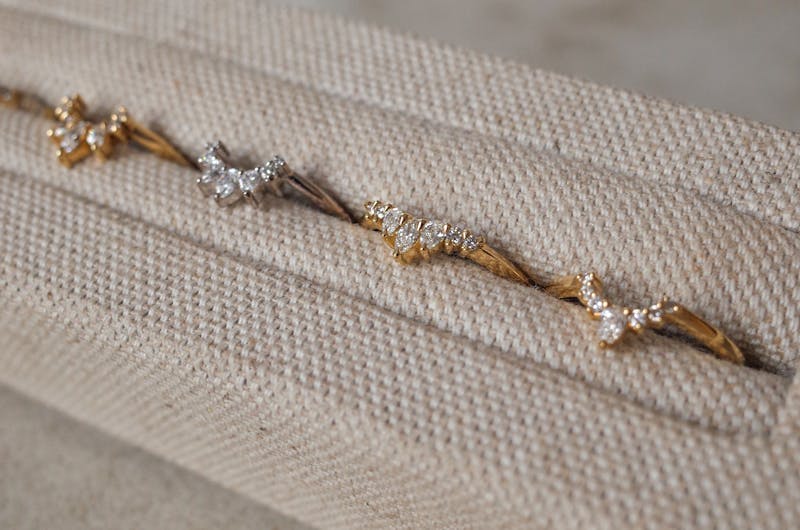
Oh no: WHAT IF YOU MESSED UP / RECOURSE WITH JEWELLER
You did everything right… but you changed your mind, your partner isn’t happy with the ring, or you remembered them saying yellow gold was their favourite when it was in fact rose gold.
Although bespoke pieces are not exchangeable, since the jewellery designer made it specifically for you, the good news is that all metal can be melted down and reshaped. Typically, the gemstone is the most expensive part of the ring, so if you got the stones right, you could get the jeweller to redesign the ring using the same stone.
The same principles apply if you want to remodel the ring in the future, whether that’s in a few years or a few decades.
Make sure you have the right stone and a good jeweller, and things will be easier should you want or need to redesign the ring.
Selected pieces
Now that you’ve thought through everything, you’re ready to buy the perfect engagement ring for you and your partner. Good luck in your search!
We’re available for a chat if you still have questions or would like to start your bespoke journey with Finematter.
We also have a plethora of exciting jewellers and many engagement ring options right here on the site. Let us know how we can help you!
